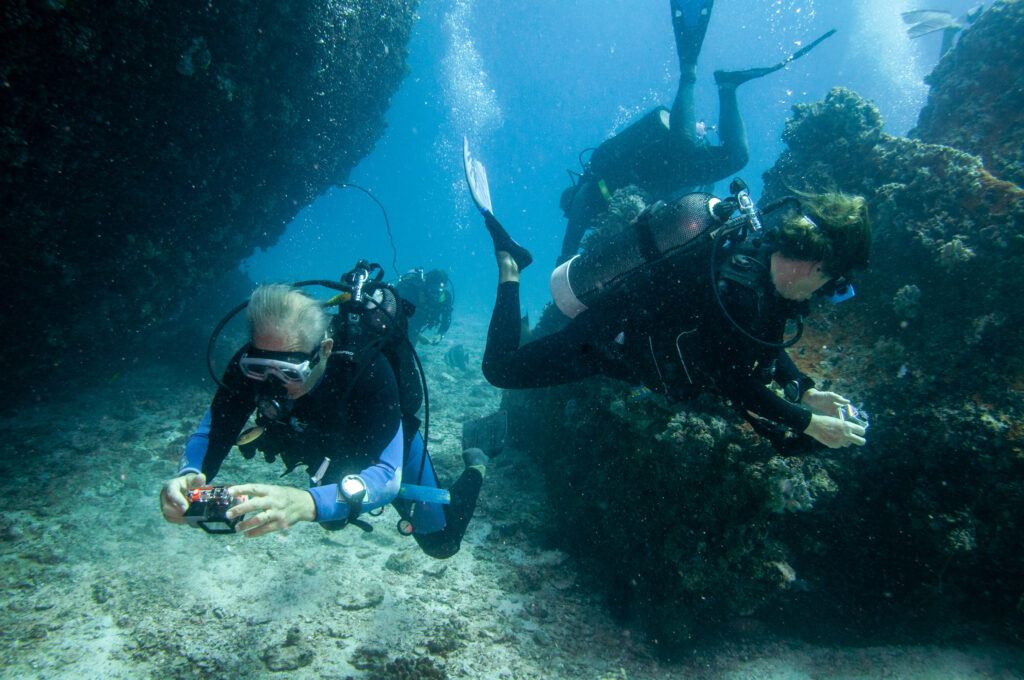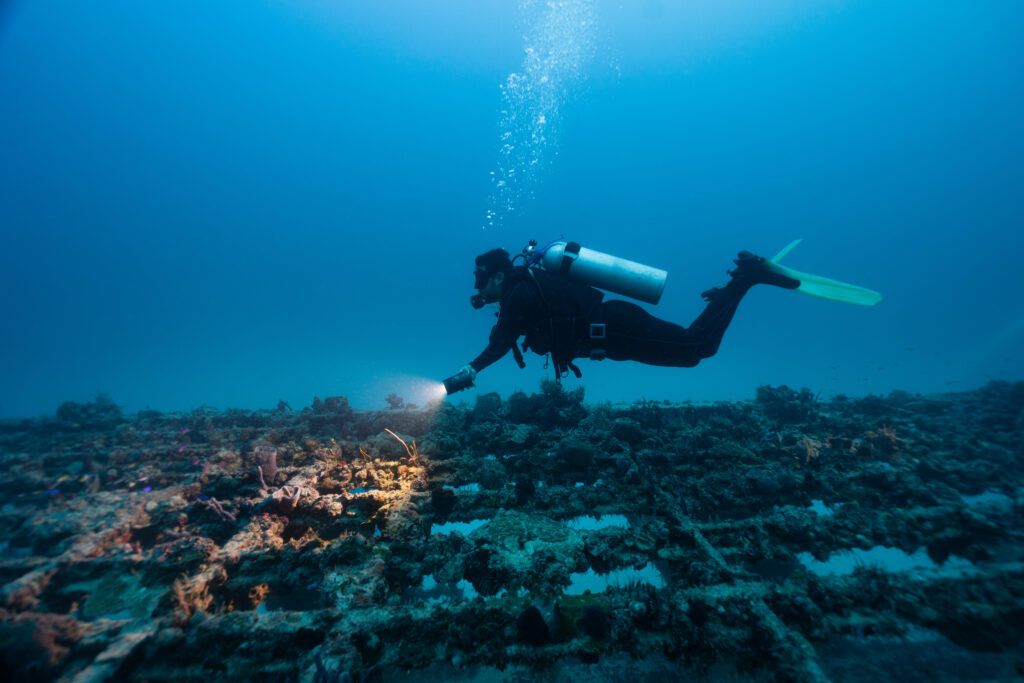What is Buoyancy Control?

What is Buoyancy Control? Buoyancy control is a fundamental skill in scuba diving, essential for both safety and underwater exploration. It enables divers to maintain a constant depth, efficiently ascend and descend in the water column, and effortlessly glide through their surroundings. Mastering buoyancy control requires understanding the principles of buoyancy and applying them to […]
What are Booties?

Booties are a critical component of scuba diving equipment designed to protect and insulate a diver’s feet in various underwater environments. They are typically used in conjunction with open-heel fins, offering both comfort and safety during dives. Their importance lies in shielding the feet from cold water temperatures and potential hazards like sharp rocks or debris that divers often encounter, especially during shore or wreck diving. This entry explores the construction, functionality, and selection of booties, alongside essential maintenance tips to ensure long-lasting performance.
What is Barotrauma?

What is Barotrauma? Barotrauma is a crucial topic in the world of scuba diving, as it represents a type of injury that divers may experience due to changes in pressure during their underwater adventures. Scuba divers should be well-informed about barotrauma to avoid potential hazards and to respond effectively in case of an injury. Definition […]
What is Ascent when Diving?

Ascent refers to the upward movement a diver makes as they transition from being submerged underwater to reaching the surface. This process is an essential phase in scuba diving, directly impacting the safety and health of the diver. Ascent is not necessarily a straightforward or continuous journey from depth to the surface; it may require planned pauses, known as decompression stops, to help the body adjust to pressure changes and avoid decompression sickness, a condition commonly called “the bends.” In scuba diving, a controlled and deliberate ascent is crucial to maintaining well-being, preventing injuries, and ensuring a safe return to the surface. This article will explore the importance of ascent, its stages, best practices, and the potential risks divers face during this critical part of the dive.
What is a Backplate?

What is a Backplate? The backplate is an essential component of a diver’s equipment, providing a stable and secure platform for attaching the primary scuba cylinders and other essential gear. Typically made from metal, the backplate ensures that the weight of the equipment is evenly distributed across the diver’s back, enhancing comfort, stability, and balance […]
What is a Weight Belt?

What is a Weight Belt? In the exhilarating world of scuba diving, buoyancy control is essential for a safe and enjoyable underwater experience. One of the fundamental pieces of equipment that assists divers in achieving optimal buoyancy is the weight belt. Designed to counteract the natural tendency to float while submerged, weight belts help divers […]
Can you get Hyperthermia when Scuba Diving?

Can you get Hyperthermia when Scuba Diving? Hyperthermia is a condition characterized by an elevated body temperature above the normal range, can pose a significant risk to scuba divers if not managed effectively. In the context of scuba diving, hyperthermia can result from overheating in a wetsuit, leading to a myriad of potential health issues. […]
What is Thermocline when Diving?

What is Thermocline when Diving? A thermocline is a naturally occurring phenomenon in bodies of water, where two layers of water with distinct temperature differences meet. For scuba divers, understanding and navigating through thermoclines is essential for a safe and enjoyable diving experience. This entry will discuss the science behind thermoclines, their impact on marine […]
What is Lift Capacity when Scuba Diving?

Lift capacity plays a vital role in scuba diving, as it refers to the amount of buoyancy provided by a buoyancy control device (BCD).
